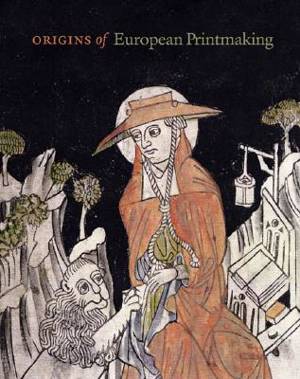
- Afhalen na 1 uur in een winkel met voorraad
- Gratis thuislevering in België vanaf € 30
- Ruim aanbod met 7 miljoen producten
- Afhalen na 1 uur in een winkel met voorraad
- Gratis thuislevering in België vanaf € 30
- Ruim aanbod met 7 miljoen producten
Origins of European Printmaking
Fifteenth-Century Woodcuts and Their Public
Peter Parshall, Rainer SchochOmschrijving
The first comprehensive history of late medieval printmaking, which transformed image production and led to profound changes in Western culture
This highly anticipated and beautifully illustrated book examines the evolution of early printmaking in late medieval Europe. Through their means of production and the evidence of their utility, prints are explored in a broad social and economic context. Key topics include the complex problem of reconstructing the beginnings of the European woodcut; the practice of copying and dissemination of models endemic to the medium; and the varied functions of the print from the spiritual to the secular.
A team of expert authors examines the many ways in which fifteenth-century woodcuts and metalcuts reflect the nature of piety and visual experience. Replicated images helped to structure private religious practice, transmit beliefs, disseminate knowledge about material facts, and graph abstract ideas. Mass-produced pictures made it feasible for people of all stations to possess them, thereby initiating a change in the role of images that eventually helped alter the definition of art itself.
The Origins of European Printmaking is an essential book for art historians, students, and collectors, as well as the general reader with an interest in medieval history and culture.
Exhibition Schedule:
Germanisches Nationalmuseum, Nuremberg (December 14, 2005 - March 19, 2006)
National Gallery of Art, Washington (September 4 - November 27, 2005)
Specificaties
Betrokkenen
- Auteur(s):
- Uitgeverij:
Inhoud
- Aantal bladzijden:
- 376
- Taal:
- Engels
Eigenschappen
- Productcode (EAN):
- 9780300113396
- Verschijningsdatum:
- 15/09/2005
- Uitvoering:
- Hardcover
- Formaat:
- Genaaid
- Afmetingen:
- 249 mm x 319 mm
- Gewicht:
- 2313 g

Alleen bij Standaard Boekhandel
Beoordelingen
We publiceren alleen reviews die voldoen aan de voorwaarden voor reviews. Bekijk onze voorwaarden voor reviews.











